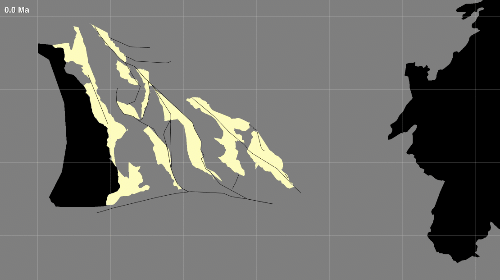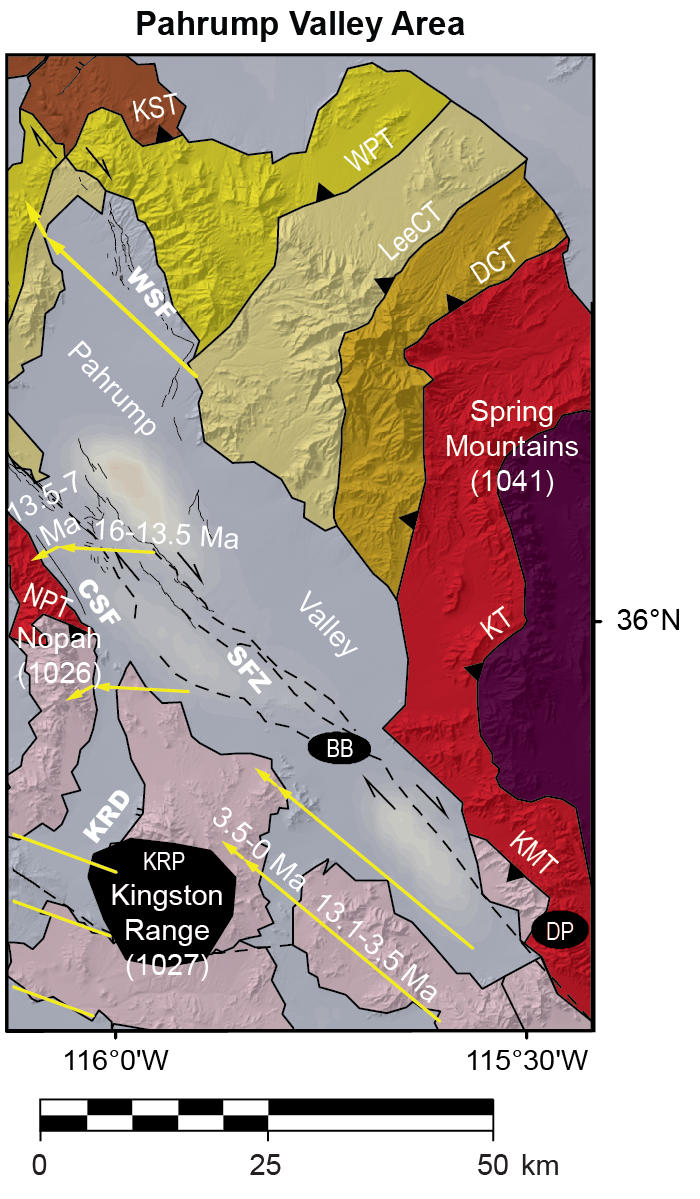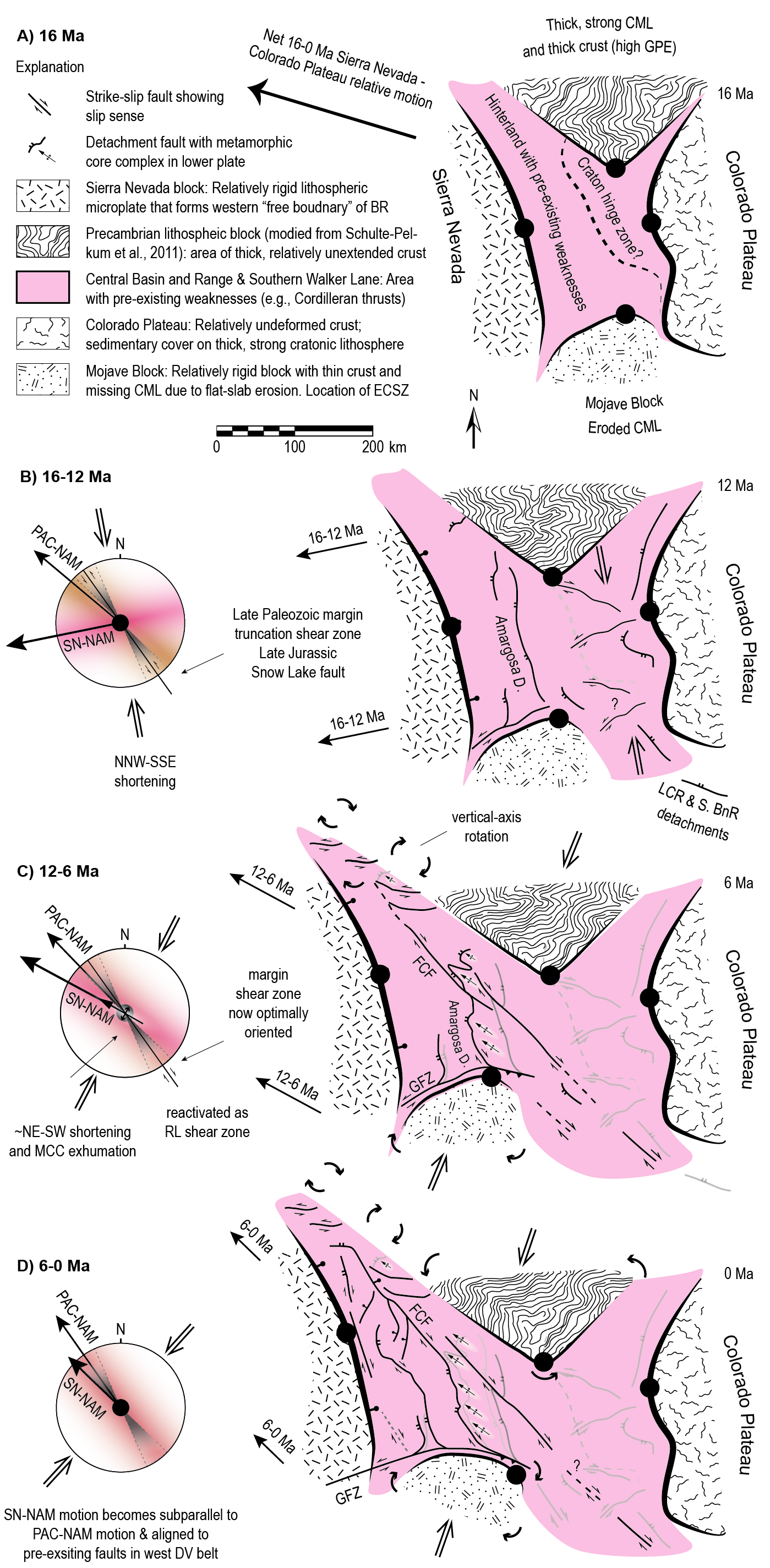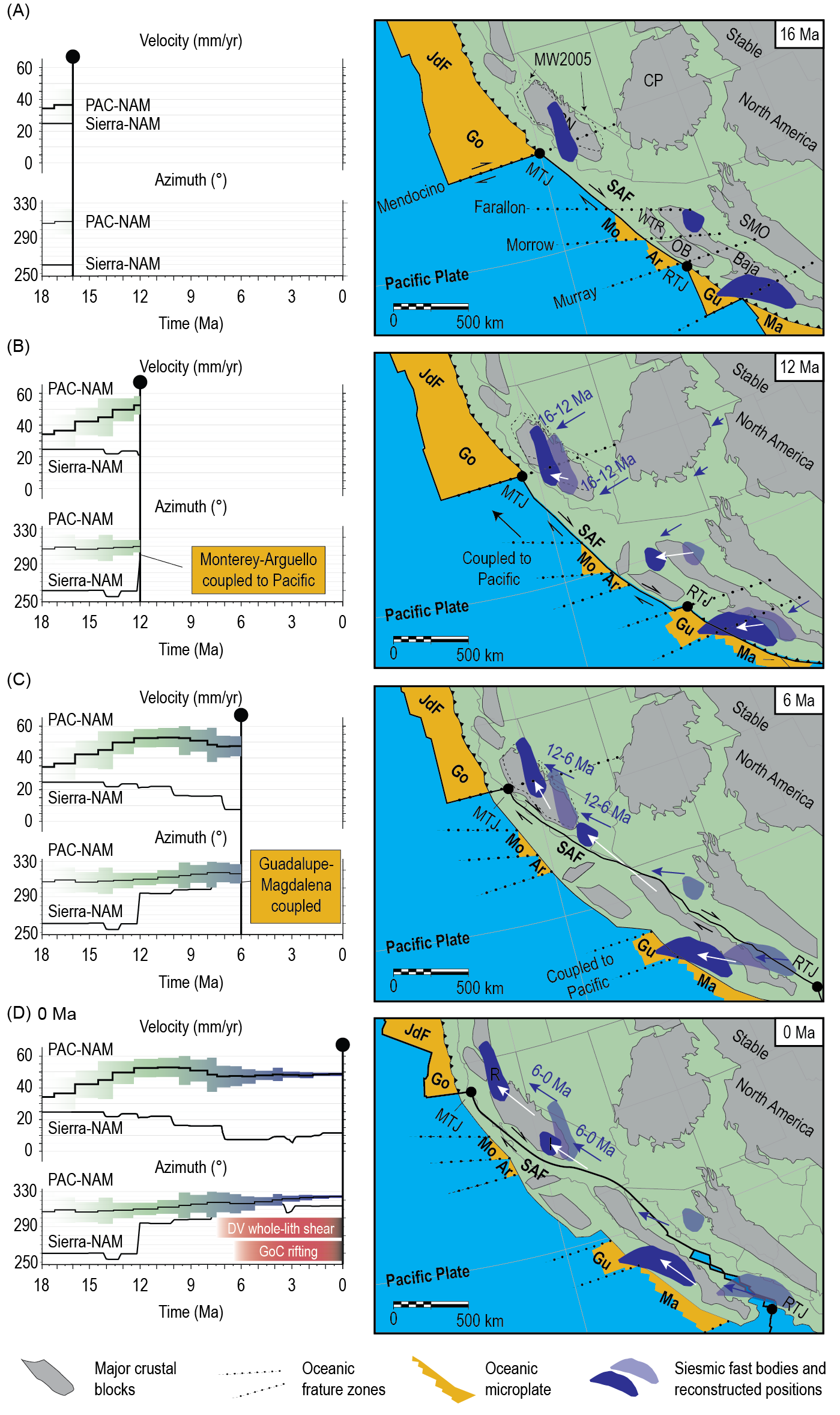WHOLE-LITHOSPHERE SHEAR DURING OBLIQUE RIFTING (Geology PDF)
and
LATE CENOZOIC TECTONIC RECONSTRUCTION OF THE CENTRAL BASIN AND RANGE (Geosphere, in review)
Continental rupture requires shear zones that cut the entire lithosphere. What controls the development of such whole-lithosphere shear zones?
Boundary conditions?
degree of obliquity
strain rate
Internal thermo-rheological setting?
heat flow
intraplate rheology
In this paper, my coauthors and I show that intraplate rheology is most important.
We document the formation of a whole-lithosphere shear zone in the Death Valley region at the edge of the Walker Lane/ECSZ (see image right).
Whole-lithosphere shear
is defined by offset features that span the upper crust to the Moho and the LAB; All have post-8-6 Ma dextral offset of ~55-60 km.
A GPlates reconstruction
of intraplate deformation was prodcued by re-aligning thrust plates (colors) & Miocene offset features (black polygons) between the Sierra Nevada (pink; left) & the Colorado Plateau (black; right)
This high-resolution kinematic model (0.1-Myr steps)…
allows us to correlate changes in obliquity and rate to the development of the whole-lithosphere shear zone, which formed at ca. 8-6 Ma.
We demonstrate a temporal change in coupling between the upper crust and mantle lithosphere during oblique rifting (see image left above).
Early upper crustal extension was decoupled from the lower crust and mantle lithosphere by a weak middle crust (pink above). Exhumation of the weak middle crust in regional metamorphic core complexes thinned, cooled, and strengthened the weak layer, leading to enhanced coupling and initiation of a whole-lithosphere shear zone (yellow).
The whole lithosphere shear zone was spatiotemporally controlled by intraplate rheology (co-located with MCCs; see figs above) and temporally correlated with clockwise rotation of the regional extension to become subparallel to Pacific-North American relative plate motion (see B on image right above showing extension azimuth).
Thrust plates and offset features in the west-central Basin and Range province, USA Cordillera.
The map shows thrust plates from Lutz et al. (2022) modified after Snow and Wernicke (2000), faults in the region, and offset features used in the tectonic reconstruction (see animation above).
Extensional basin evolution
with time in the central Basin and Range based on our kinematic model and the reconstructed positions of diachronous unconformities
Crustal stretching factors
are estimated from tracked points within a deforming mesh, where dilatational strain is iteratively calculated. Red is high stretching and blue is low
Figures from submitted Geosphere Paper
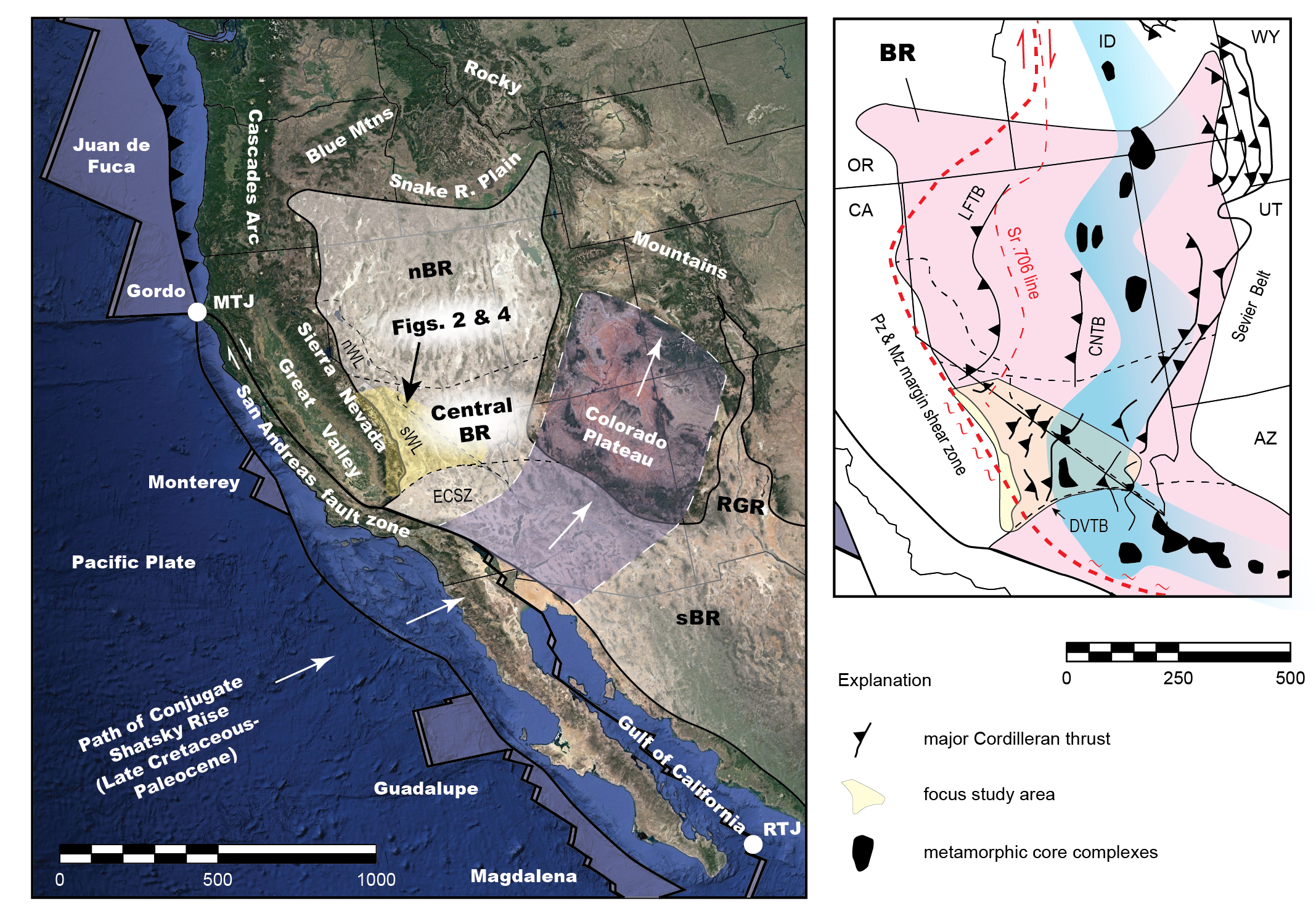
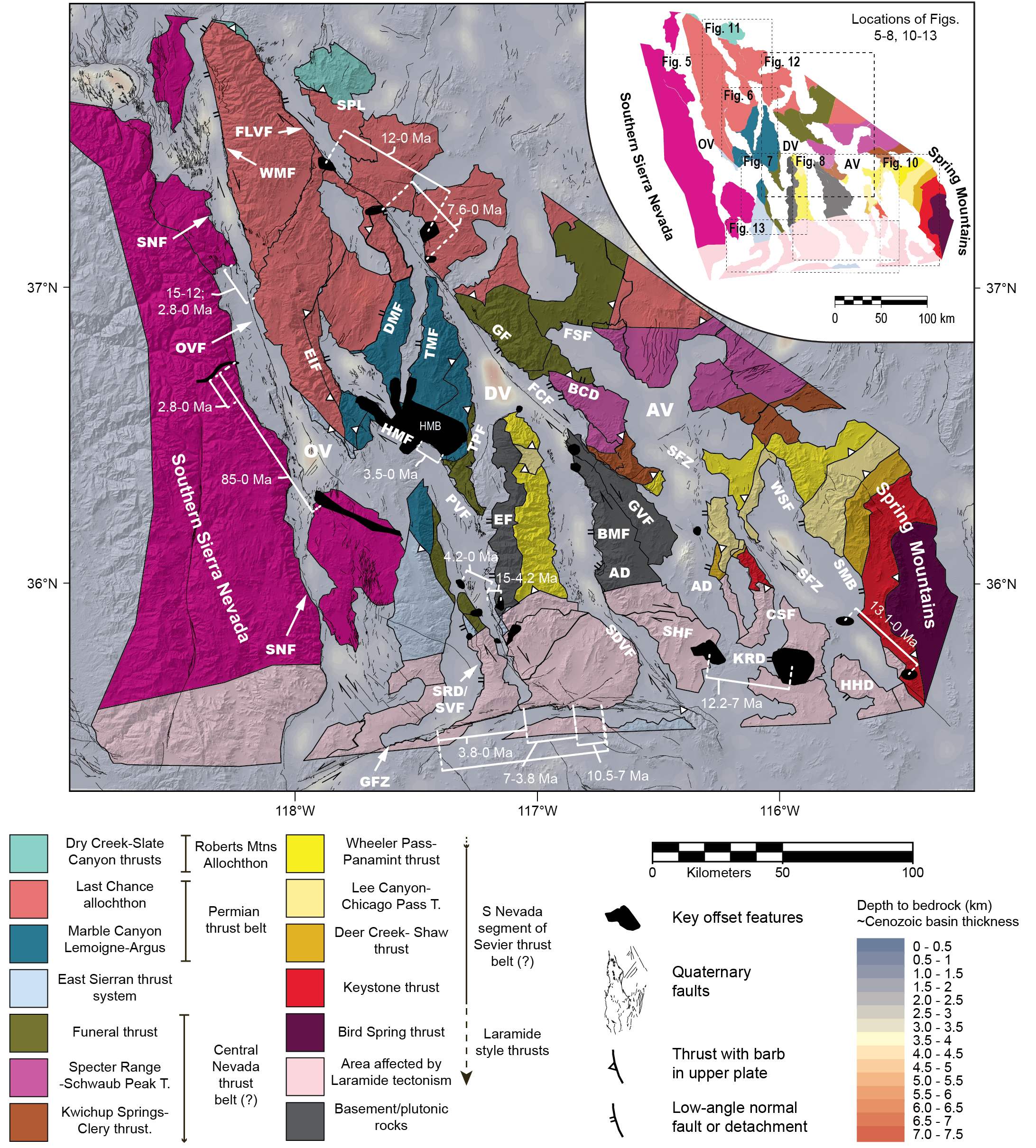
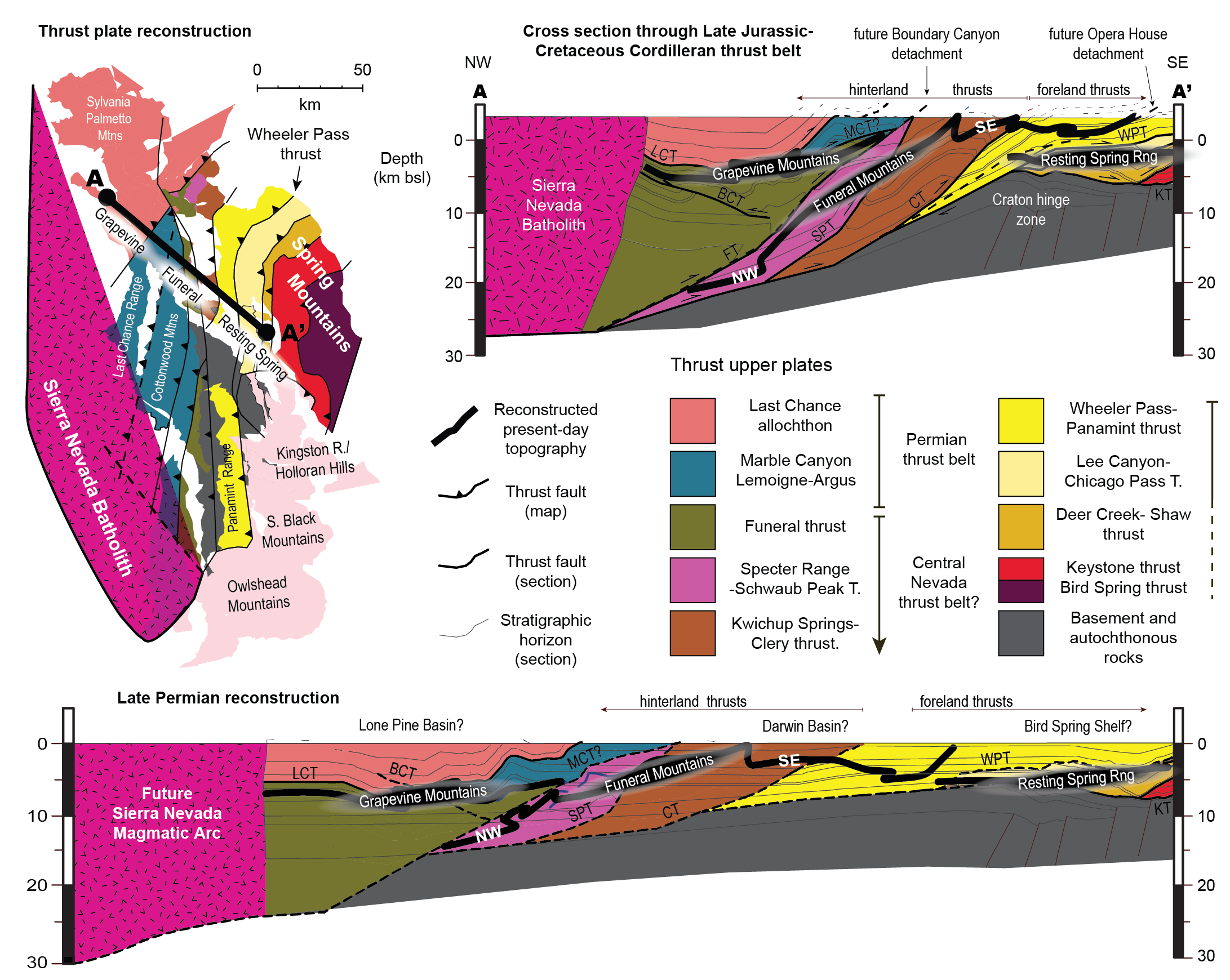
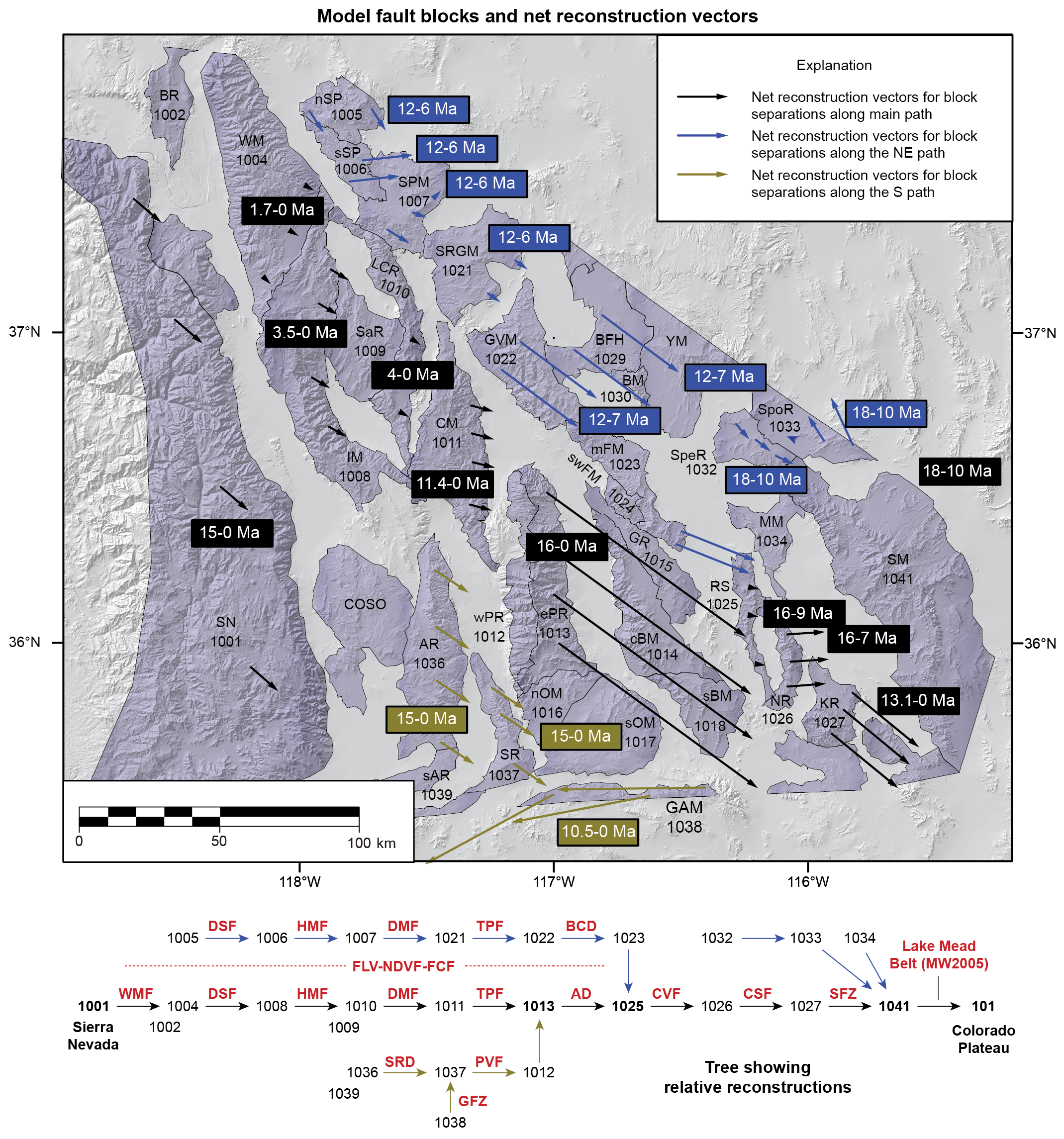
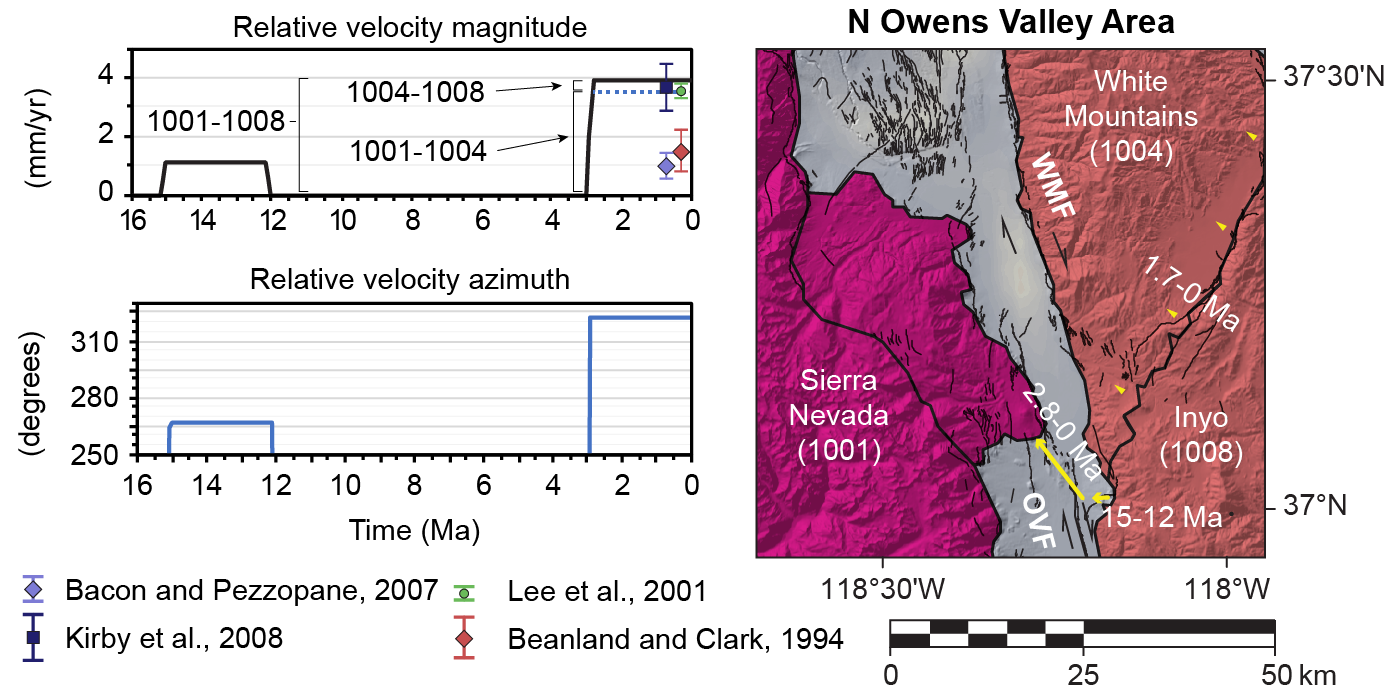
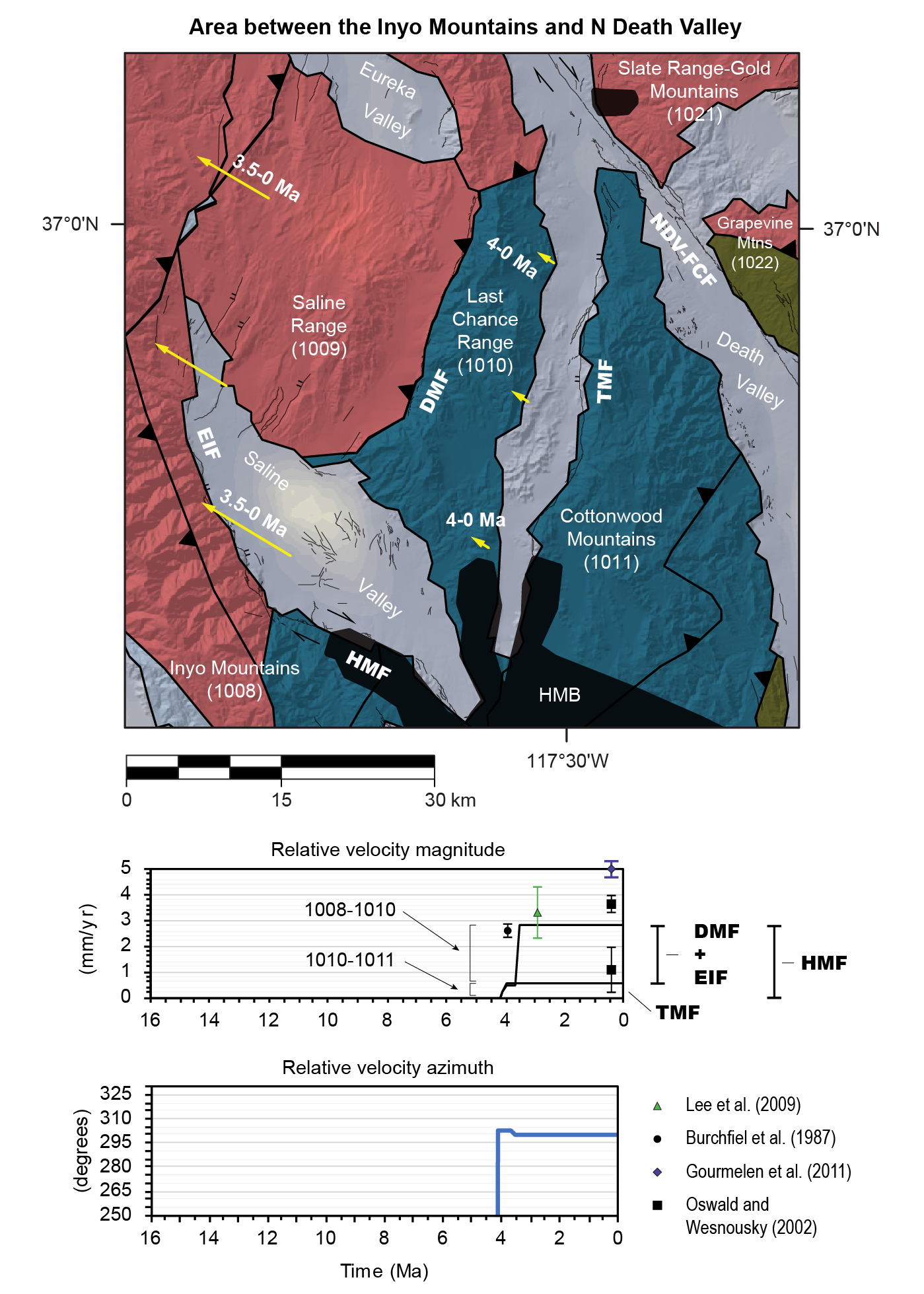
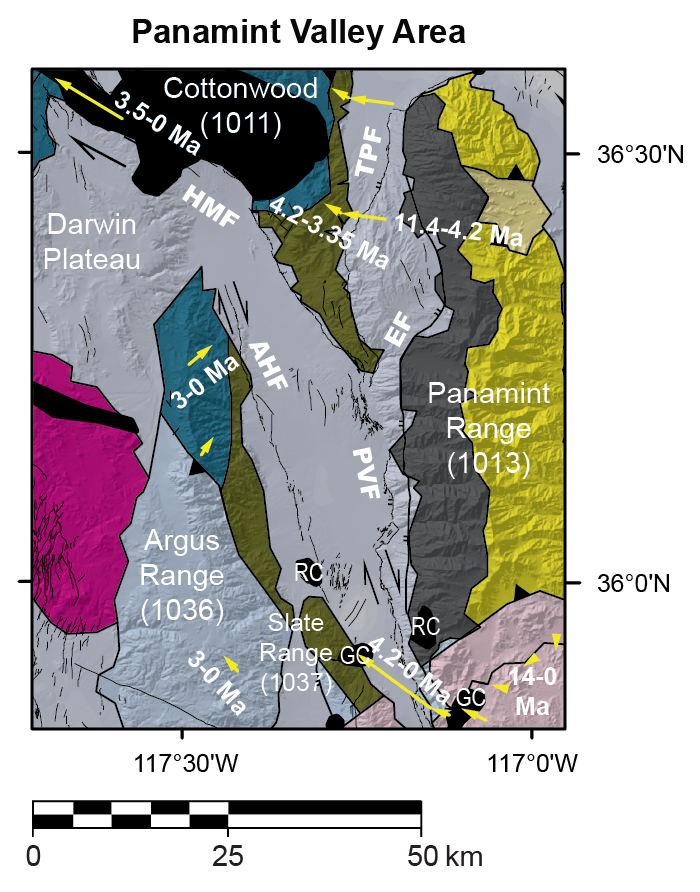
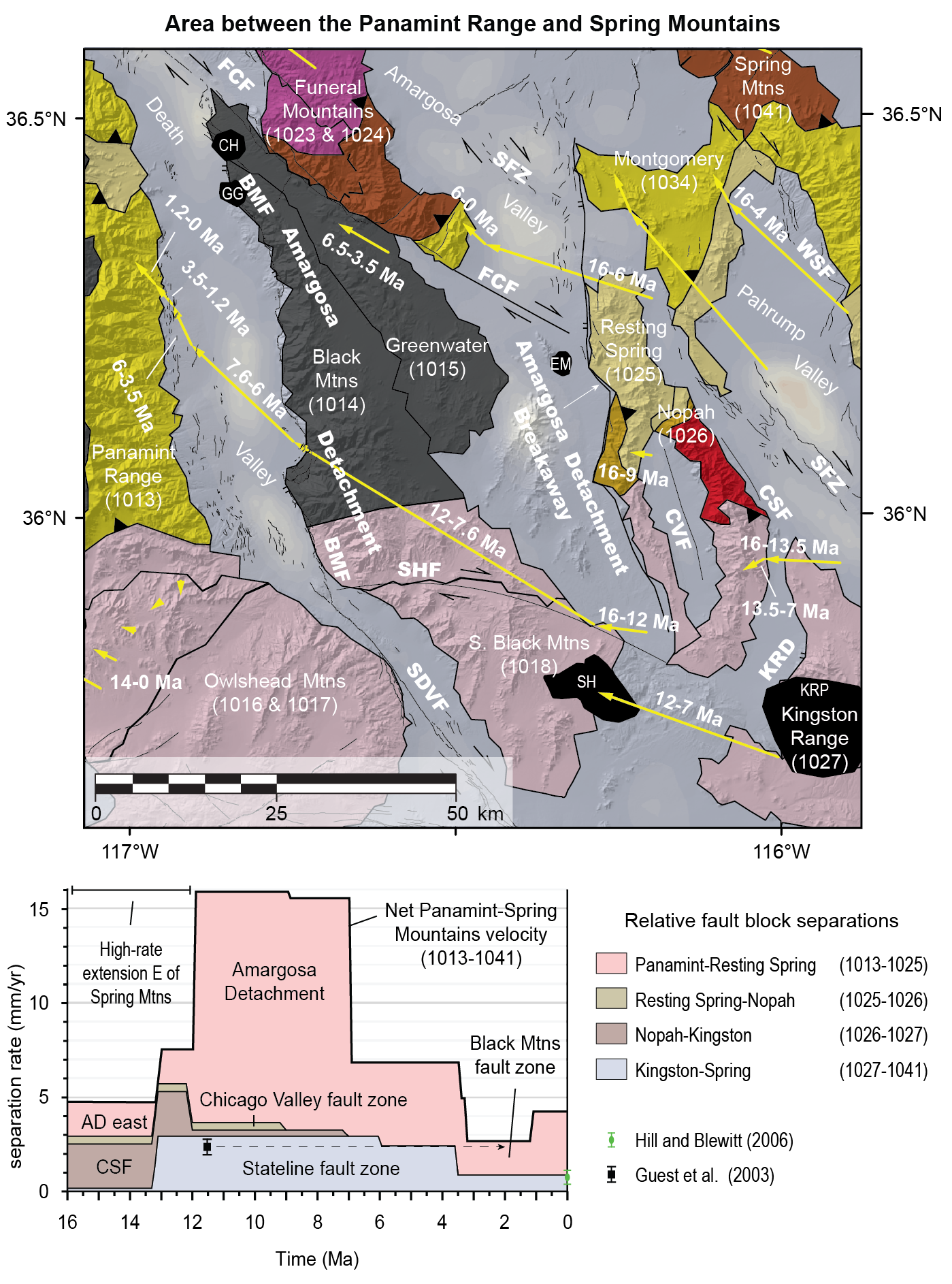
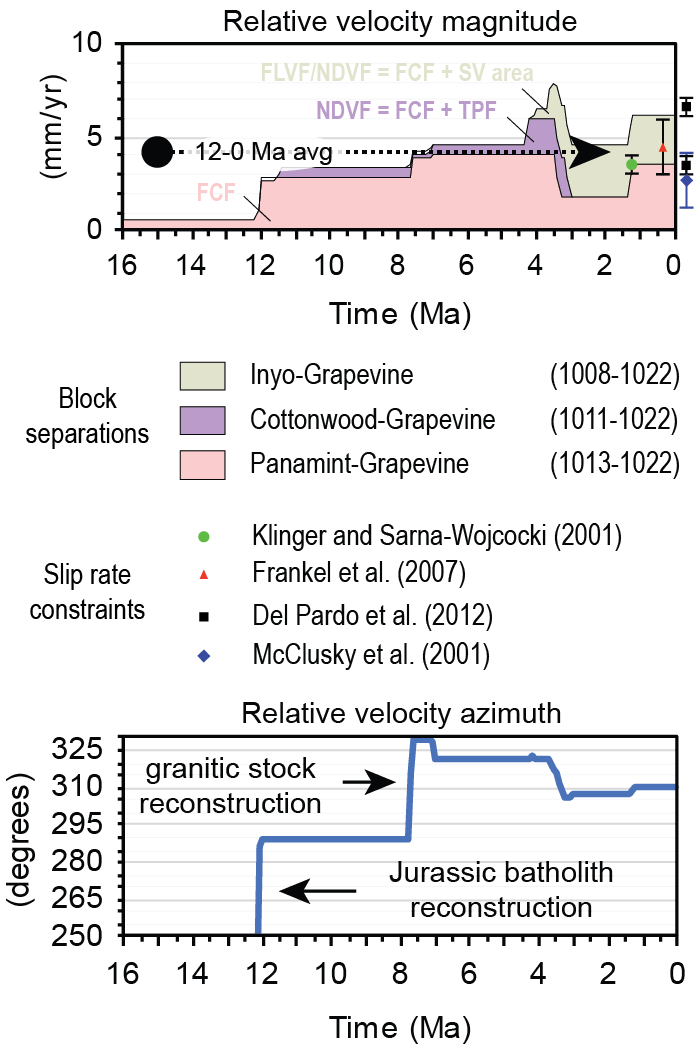
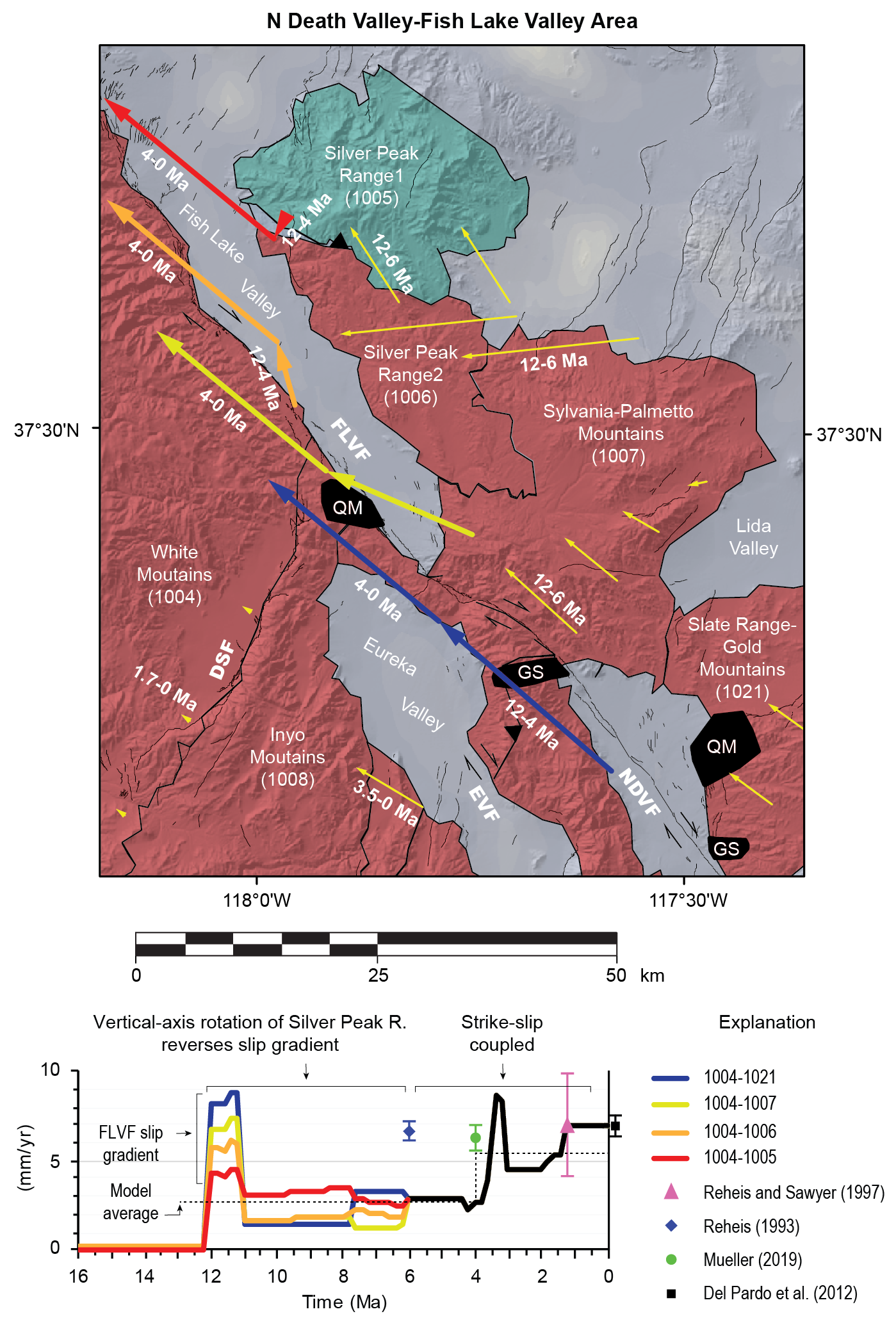
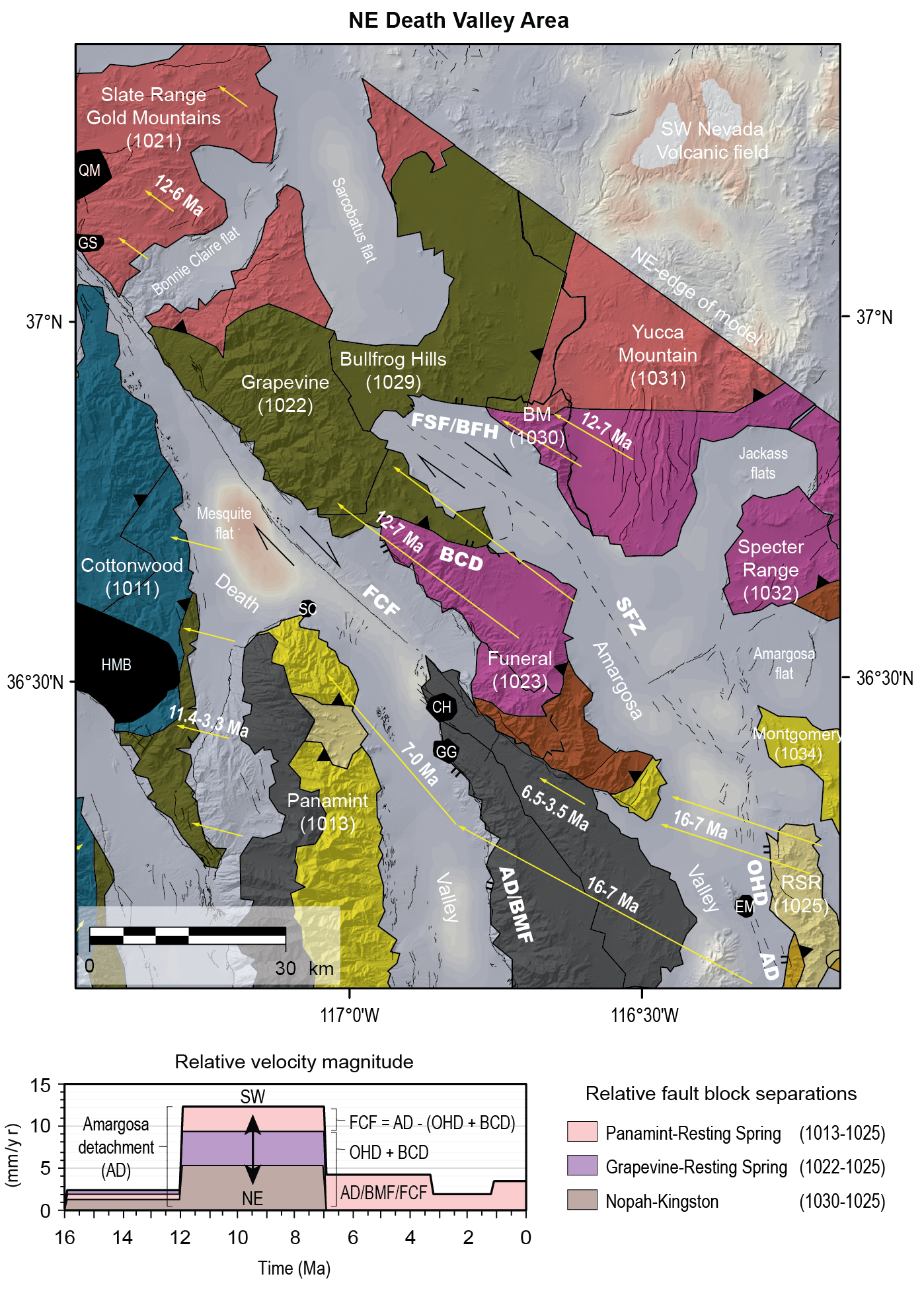
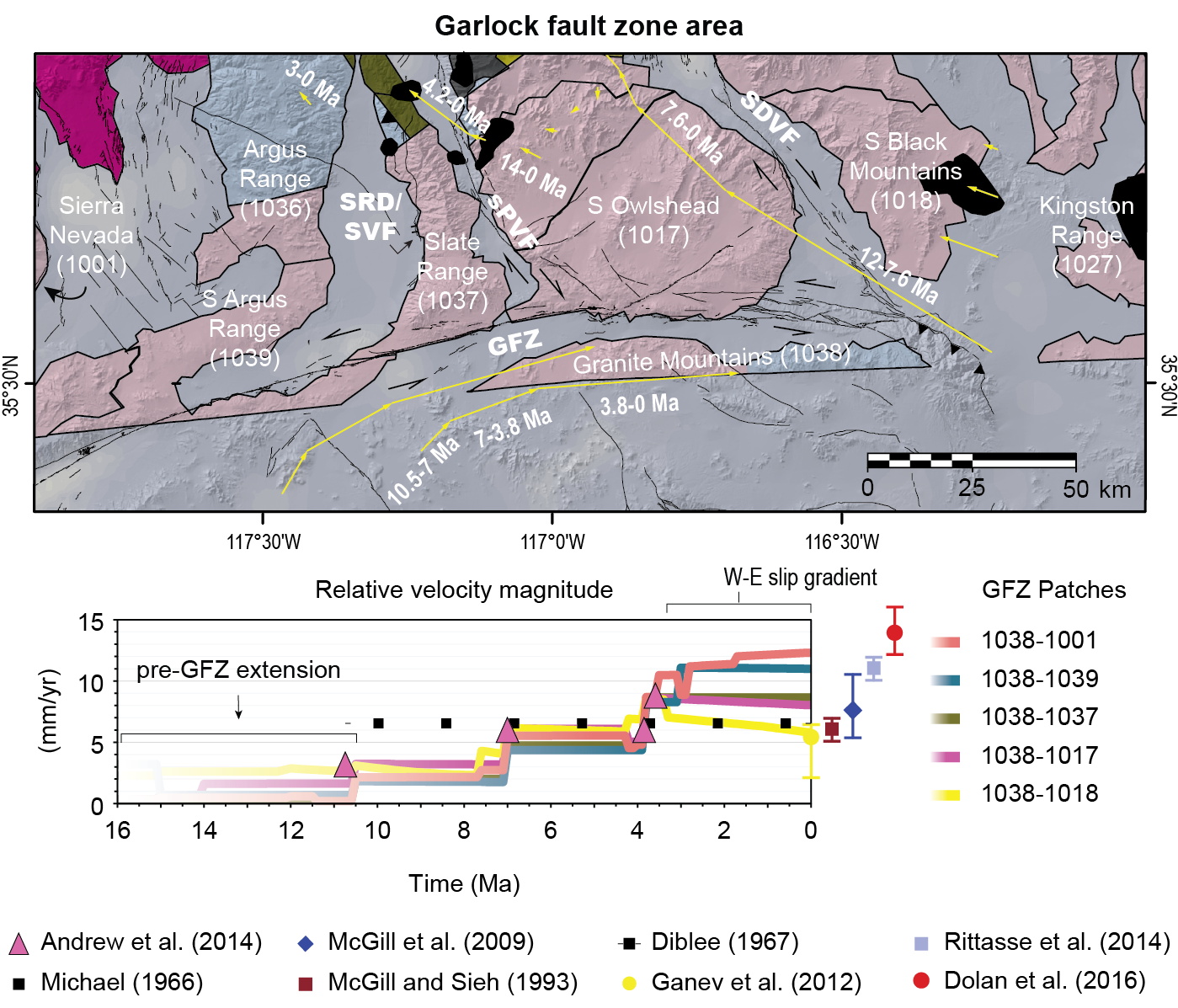
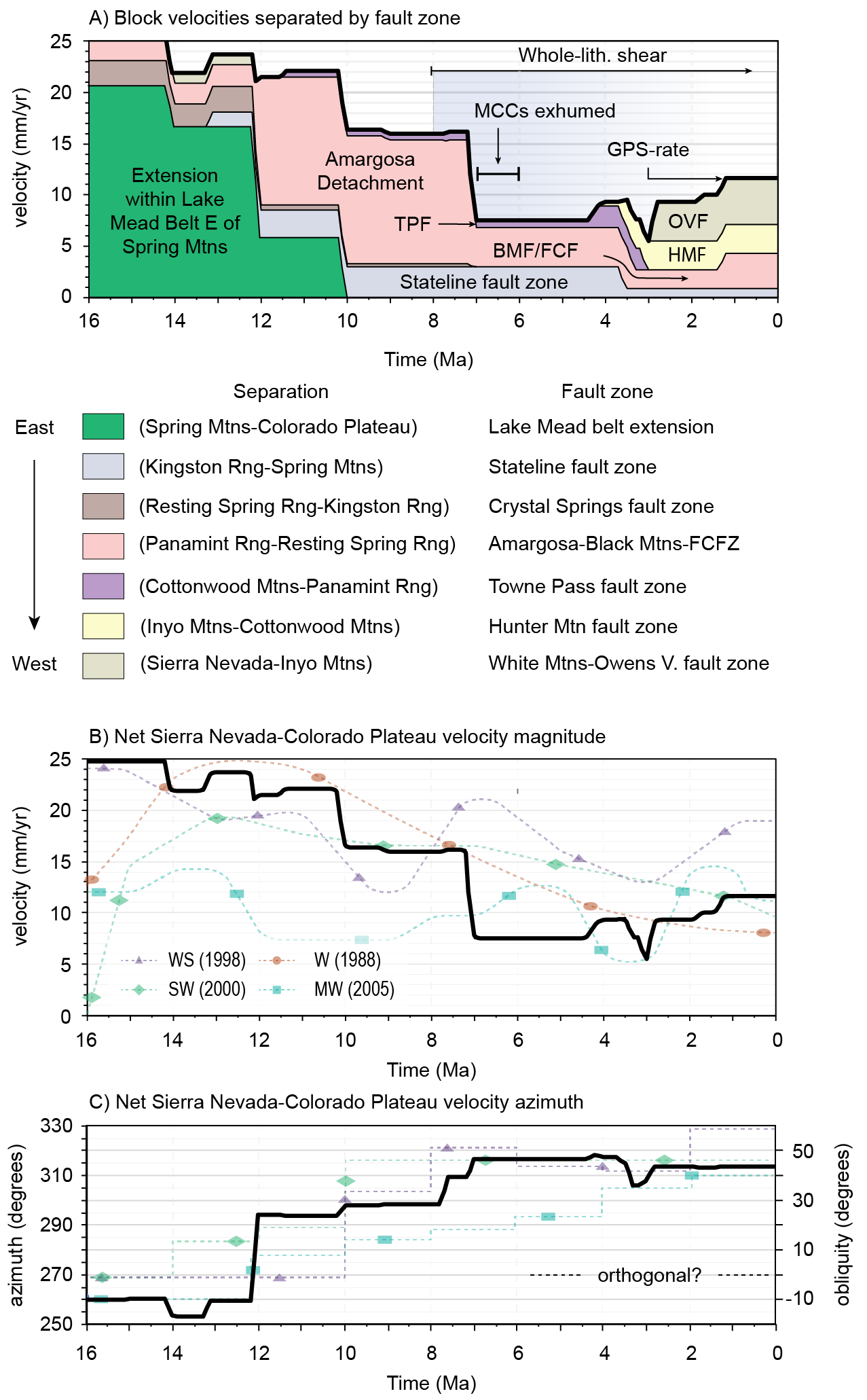
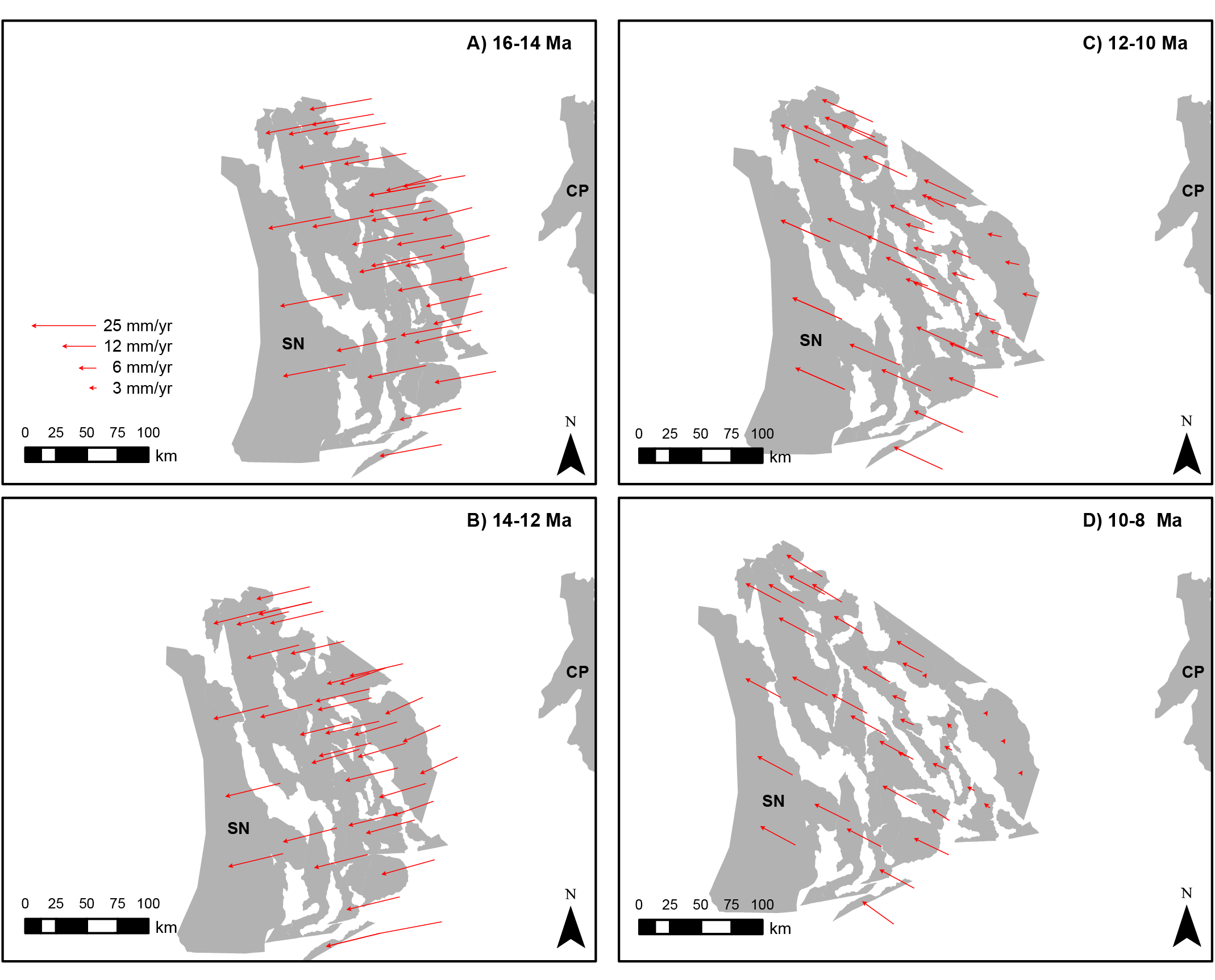
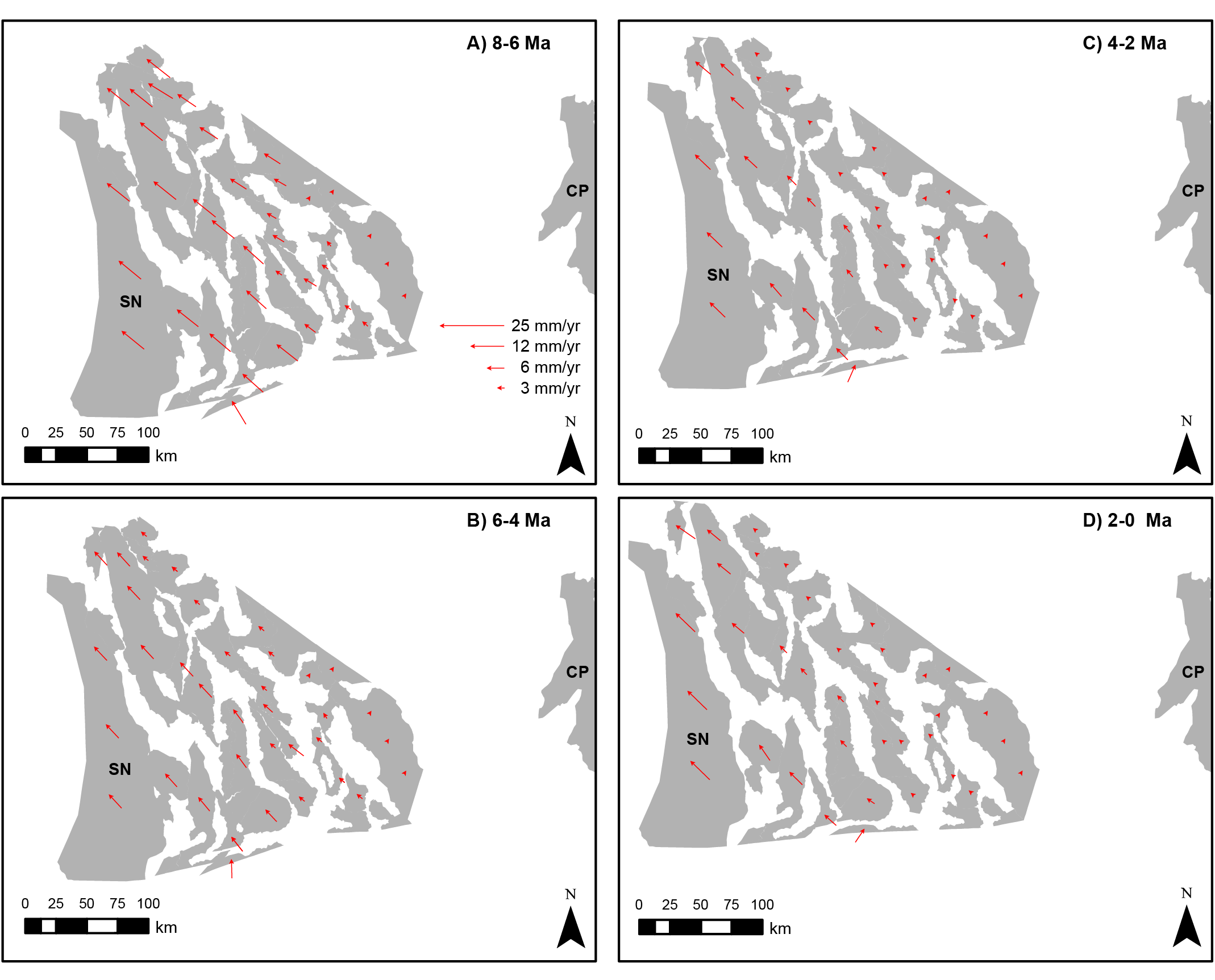
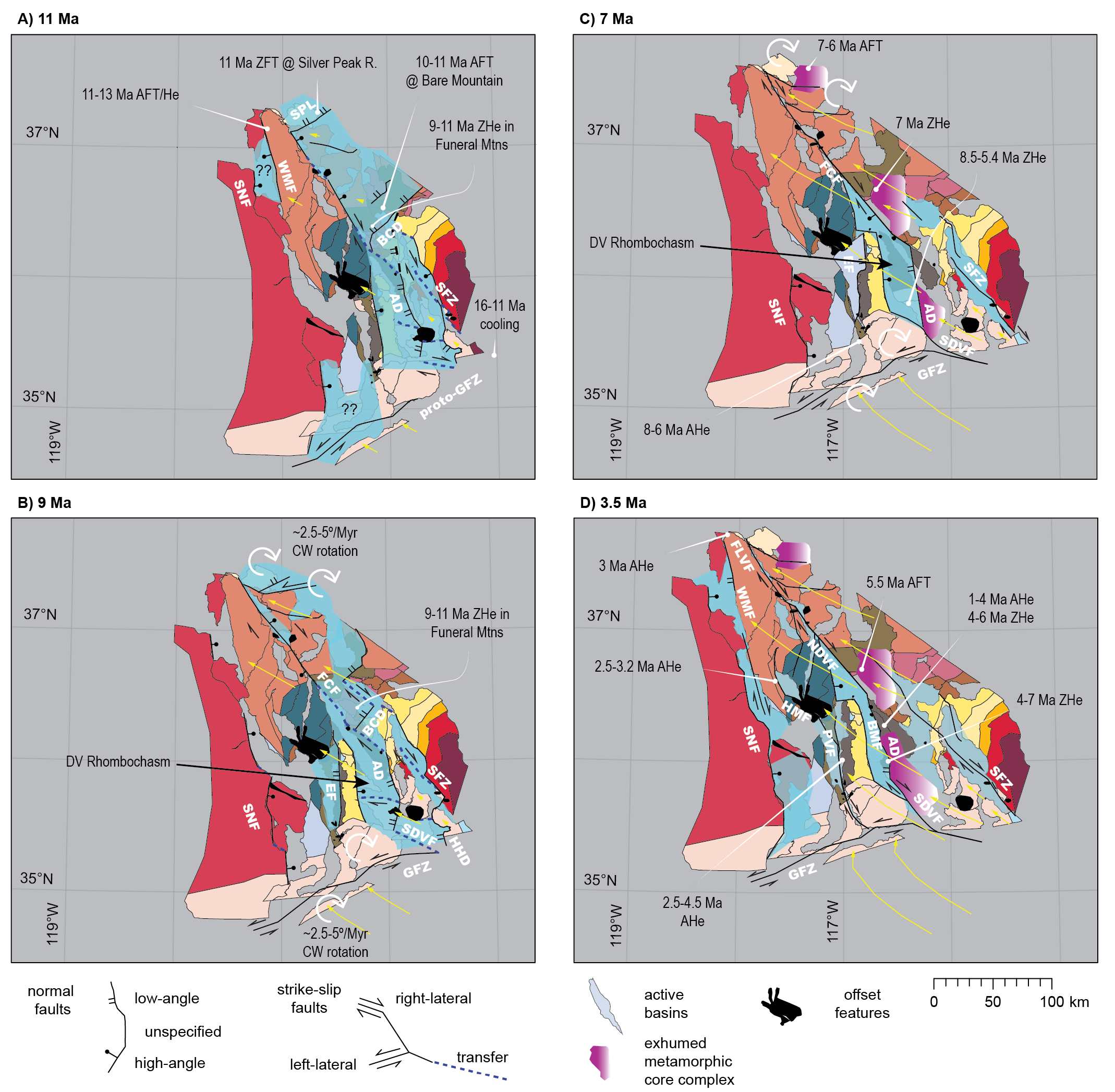
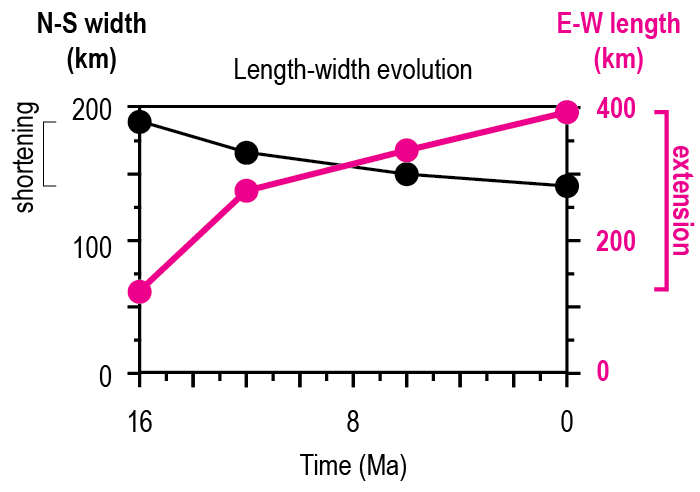
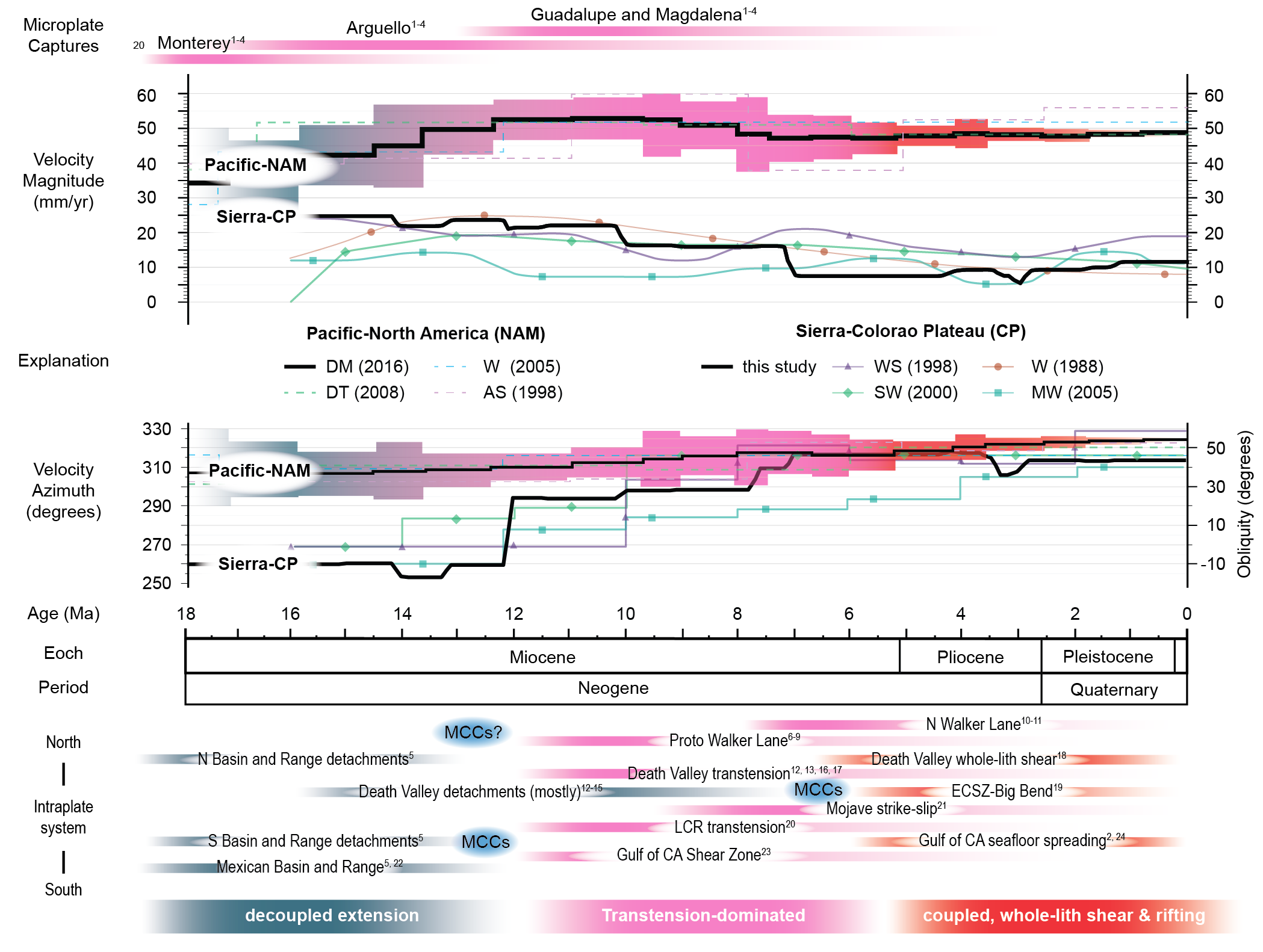
Collaborators on this project:








